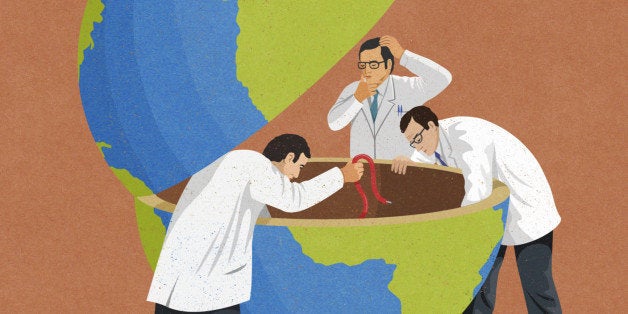
The world witnessed the human face of the tragedy in Syria, with heart-breaking photos of a three-year old boy -- Aylan Kurdi -- washed ashore after being drowned, in an effort to escape devastation. My students and I, who had just started the new academic year, struggled to identify what can we do? Beyond occasional tweets and Facebook likes, what do we owe to society to tackle humanitarian crises?
I teach in the department of biomedical engineering. The challenges we routinely discuss in the classroom are of a mathematical nature. Our questions are far removed from those seen by migrants outside the train station in Hungary or on the Aegean shores. But does that absolve us, as practitioners of biomedical engineering? Is there a moral responsibility, both for those who design the curriculum, and those who study biomedical engineering, to contribute to the greatest problems of our time? Or are we all bystanders, armed with a legitimate excuse, to not intervene? I would argue that not only do we have a fundamental moral responsibility to contribute to our greatest global humanitarian challenges, we are also better equipped than we recognize, to improve the lives of the most vulnerable in the times of immense need.
Engineers, historically, have always responded to crises. Be it the time of a natural calamity or the time of violent conflict, engineers have always been at the leading edge, to defend the most precious of all assets: the human life. The nature of conflicts and crises may have evolved, but the fundamental goal of creating solutions to improve the human condition is at the very core of our learning and practice. It is in times like these that we need to test our resolve to do what it takes to serve all people. We need to derive our sense of moral responsibility from the same set of ethical principles that motivate doctors, nurses, emergency respondents and countless other professionals. The ethical responsibility does not automatically mean serving at the forefront, or implies engagement of every practitioner, but it requires thinking deeply about the problems and doing all that one can to save lives.
The ability of biomedical engineers, with knowledge of both engineering and health sciences, to contribute to the greatest humanitarian challenges of our time rests on two pillars: awareness and engagement.
Regarding awareness, we are failing our students. Our students have little knowledge of the complexity of the challenges, the need for solutions and the realities on the ground. Our inability to make students aware of the real world, beyond the sanitized labs and high-end hospitals, is robbing them of the opportunities to shape the world.
Awareness challenges extend beyond the classroom to the society at large, as well. Most people, including stakeholders entrusted to find solutions to complex humanitarian crises, somehow assume that all engineers do is build and create technologies. It is similar to assuming that all doctors are surgeons. Engineers are not just builders, instead, at the core they are creative thinkers and problem solvers. Fundamentally, engineers are innovators, who, given the constraints of the system, are able to solve the problem at hand. The inability of the humanitarian workers, aid agencies and front-line respondents in understanding what engineering is all about is limiting their ability to create viable solutions to save precious lives.
The second facet is that of engagement. The long history of engineering, and the relatively shorter history of biomedical engineering, both underscore a simple fact: engineering achievements are inherently collaborative. In particular, biomedical engineering, even in its name, emphasizes an interdisciplinary origin. While there is a lot of emphasis on multi-disciplinary approaches, this emphasis has failed to engage non-traditional, and more importantly, less lucrative disciplines. Student internships, seminars, class projects rely largely on high-end medical questions which while complex, do not represent many of the deeply disturbing challenges of our time. Our failure to engage with humanitarian missions, aid agencies, local stakeholders and front-line workers dealing with migrants makes us less prepared to tackle the problems of an increasingly unstable world. In the end, it starves us of an opportunity to look at new and perhaps more creative solutions. Solutions that none of us can imagine sitting in a classroom or a posh lab. Solutions that only become obvious when we roll up our sleeves, leave all assumptions behind and go with a single mission to improve the human condition.
Just like nations with financial resources have a moral responsibility towards those who are in dire need, so do people with intellectual resources. Biomedical engineers, bridging healthcare and engineering, have the tools and intellectual resources to contribute to solutions of the greatest challenges of our time. With plenty of financial, political and infrastructural challenges, it is not going to be an easy road, but we have a moral obligation to take that road.
